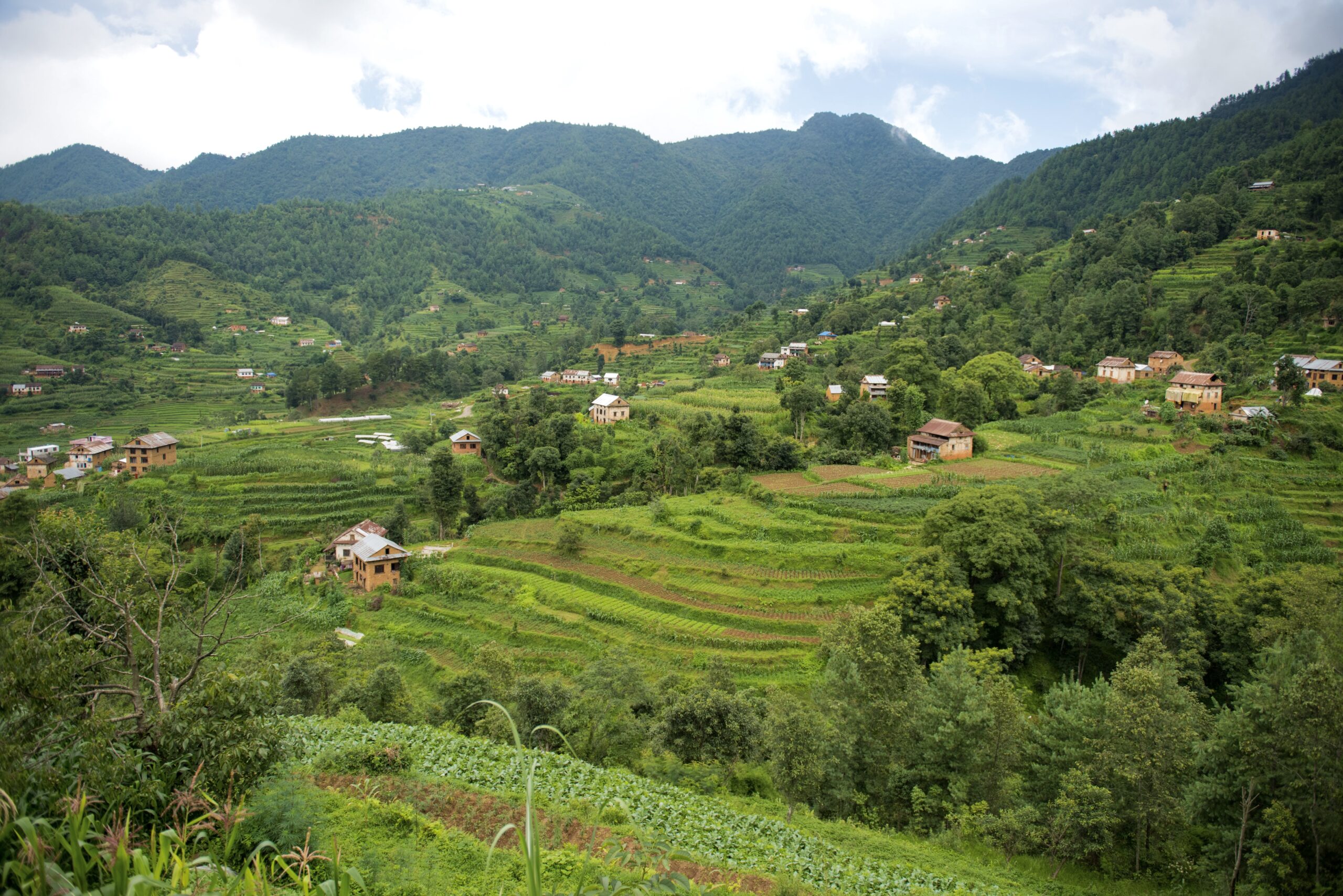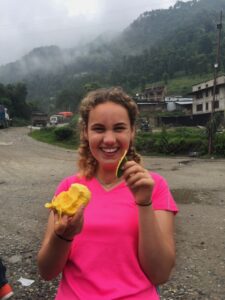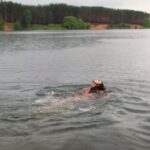Taste is influenced by the situational, geographical, social and historical contexts it occurs in, this helps us to understand how and why people might interpret and perceive taste differently (Højlund, 2015). This blog will explore how context can elicit very different visceral experiences of taste.
Travelling on a bus in Nepal, our expedition ascended up the mountain. We’d travelled for serval hours when the bus suddenly stopped unexpectedly and we got off. The view over the valley was breathtaking and I paused in awe. By the roadside a stallholder was selling mangos to travellers. My colleagues and I gathered in a huddle and we were each handed a ripe mango. I was confused, I had no knife to cut it open, so hesitantly I started peeling at the skin with my fingers. The smell hit me intensely as the vibrant yellow juicy interior appeared. I plunged my mouth wholeheartedly into the soft flesh, shamelessly gnawing and sucking around the seed. Pulp fell into my hands and juice dripped down my arms. I was immersed in a mango heaven. No words were spoken just sounds of slurping flesh and little shrieks and gasps of pleasure broke our silent huddle. The heat and exhaustion vanished and a joyous euphoria engulfed me. This was the best mango I had ever tasted.

Taste is a multi-sensory experience that involves a “fusion of sensory inputs” including smell, sound, visual, temperature and texture that integrate neurologically when we eat (Watson and Cooper, 2021, p116). However, it is more than just an individualised and personal act of consumption and reflection (Højlund, 2015).To fully experience taste is to experience how the flavours, aromas and textures translate into physical and emotional responses (Longhurs, Johnston, Ho, 2009).
Eating the mango with only my hands, changed the way it tasted. It influenced my enjoyment as it was an unusual way of eating and therefore elicited different feelings (Korsmeyer, 2016). The geographical context was also important, the vastness and beauty of the scenery and the sheer drop from the road, situated this tasting experience into a different realm (Højlund, 2015). It evoked not just embodied sensations but a powerful emotional response and something we all felt collectively. It took on a special meaning and became a shared social activity of pleasure. Taste has a sociocultural context that is learned and not just inherited (Trubek, 2008; Højlund, 2015; Jackson et al, 2022) but remains subjective, and it was through non-verbal and verbal cues (Højlund, 2015) that we evaluated the flavour and our enjoyment. It was these multisensorial contexts that induced my pleasurable euphoric state. A visceral experience of taste thus affected our perceptions and experience of flavour, and we associated additional importance and created embodied meaning to the foods we ate (Watson and Cooper, 2021).

While the flavour of the mango itself may not in reality have been the sweetest, juiciest mango in the world, to me this shared taste experience felt euphoric and unmatched to any mango I had previously had.
Word Count: 500
References:







